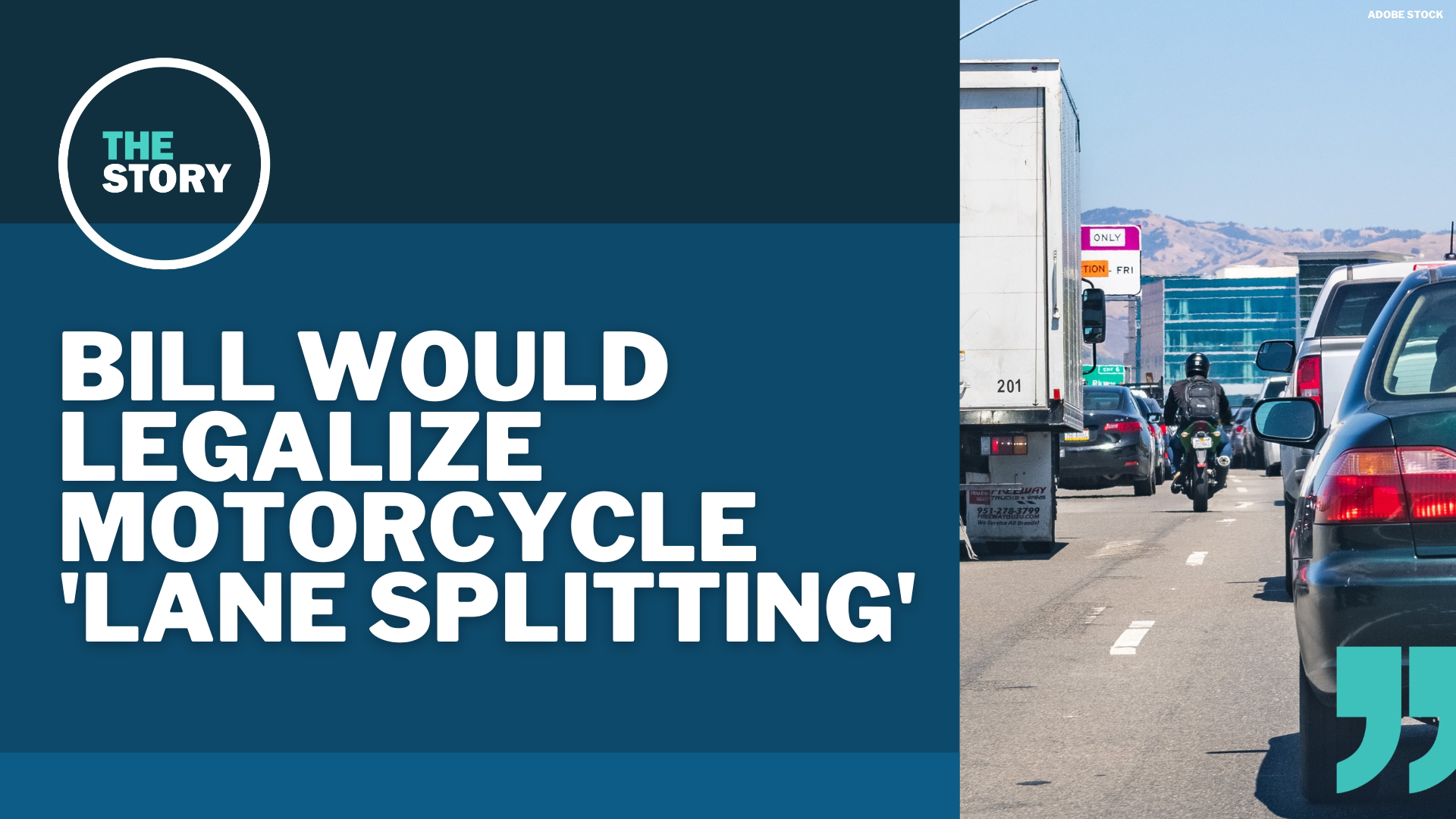SALEM, Ore. — No one loves sitting in traffic, and for those riding motorcycles, it can be tempting to just try and zip around all the cars piled up ahead. Right now, that practice is illegal in Oregon, but there's an ongoing effort to change that — and it's gained renewed life this legislative session in Salem.
The practice is called "lane splitting," sometimes referred to as "lane filtering." It's when a motorcycle rides along the line between lanes of traffic and passes by all the cars on either side.
Motorcycle enthusiasts have been trying to get lane splitting legalized, at least in certain circumstances, for years. In fact, they got very close to achieving it two years ago. A bill to legalize lane splitting passed the legislature in 2021 with bipartisan support, but then-Gov. Kate Brown vetoed the bill, convinced that it wasn't safe.
Now, with a new governor in office and some new blood in the legislature, supporters are trying again.
Senate Bill 422 would allow motorcycle riders to travel between lanes of traffic, but only under certain conditions: on freeways when traffic is slow, going less than 10 miles per hour. And in order to pass by the cars, motorcycles also wouldn't be able to go more than 10 mph.
Motorcycle riders say it's safer for them to lane split than to try and get a bike through stop-and-go traffic. Being able to quickly get out of the way of halting traffic can keep them from ending up in the middle of a crash, the argument goes.
Hundreds of people have submitted testimony to lawmakers, and overwhelmingly in support of the bill.
"I ride my motorcycle to work, which is about a 30 to 60 (minute) commute each way," one person testified. "One of the most dangerous situations I face as a rider is stop-and-go traffic, because I don't get a legal exit strategy. When I ride, I have to be constantly vigilant, aware of my environment, identify threats and formulate exit strategies. I ride as though I am invisible to drivers around me, because they are the threat I cannot control."
Despite the outpouring of support, there are some big names among the opposition. The Portland Bureau of Transportation opposes the bill, arguing that it will add to the existing dangers for motorcycle riders.
"We continue to see motorcyclists disproportionately killed in traffic crashes. Over the past five years, 46 motorcyclists have died in Portland, accounting for 17% of Portland's traffic deaths," PBOT said. "While the lane-splitting parameters in SB 422 are narrow, we are concerned that the practice of lane-splitting would spill onto city streets."
AAA also filed testimony against the bill, writing that they are concerned about inexperienced riders trying to lane split, insufficient space between vehicles, unpredictable traffic, lane splitting under the influence and potential danger to law enforcement officers who try to enforce the bill's limits.
The number of motorcycle riders killed throughout Oregon has been growing in the past five years, AAA said, with 95 killed last year alone.
Motorcycle lane splitting is broadly legal in California, and legal in Utah, Arizona and Montana under specific circumstances. There are 10 states where it's not specifically legal or banned.

